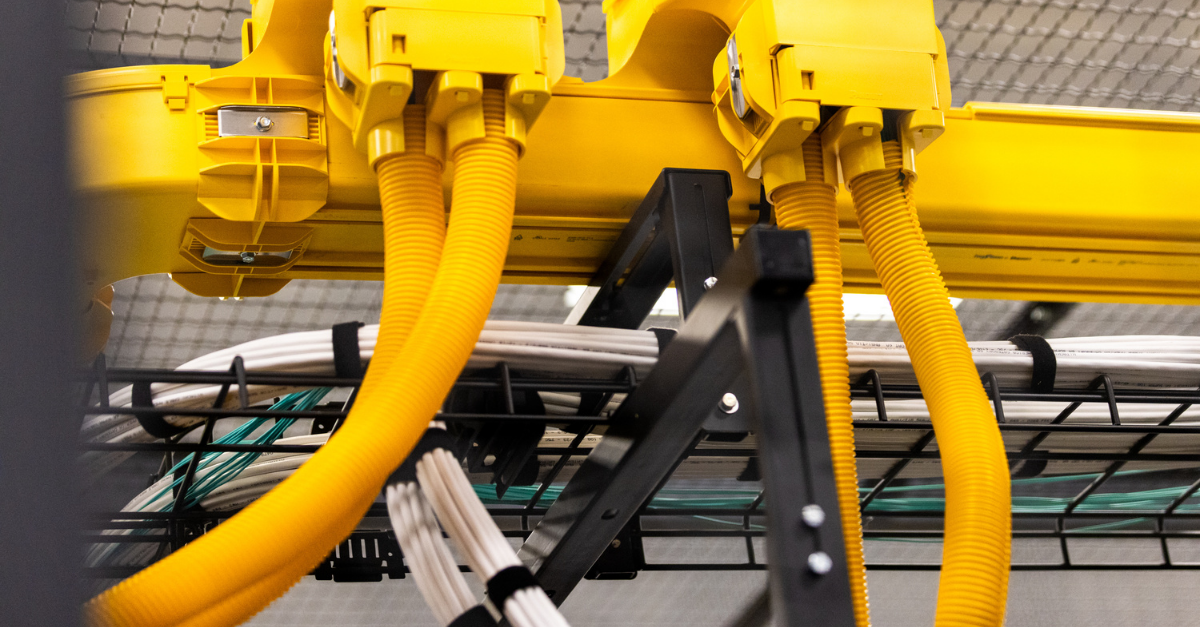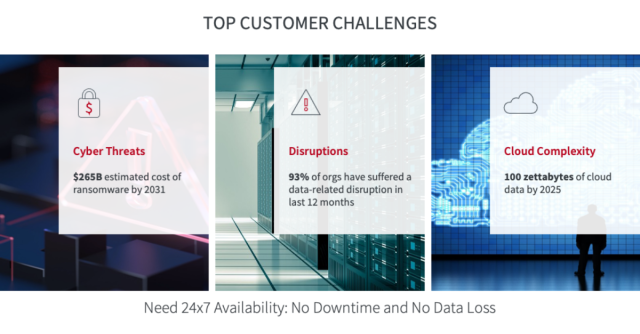Continuous data protection 101
As organizations grapple with increasing amounts of data, the risk of data loss due to cyber threats, human error, or natural disasters is a constant concern. Continuous Data Protection (CDP) offers a solution that ensures data integrity and minimizes risk, making it an essential component of any robust data protection strategy.

What is Continuous Data Protection (CDP)?
In earlier articles, we shared the basics of ‘what is data protection’, and now we define Continuous Data Protection, or CDP—a technology that continuously captures and records changes to data, providing a near-instantaneous recovery point in the event of data loss. Unlike traditional backup methods that operate on a scheduled basis, continuous data protection works by tracking every change made in the primary system data and ensuring that the backup copy reflects these changes, allowing for the restoration of the system to any previous point in time when needed.
Importance of CDP in modern computing environments
The importance of CDP cannot be overstated in modern computing environments. As organizations increasingly rely on data to drive decision-making and operations, ensuring that this data is always available and accurate is paramount. CDP helps to:
- Minimize downtime: By providing continuous backups, CDP ensures that businesses can quickly recover from data loss incidents with minimal downtime.
- Enhance data integrity: Real-time data capture means that no changes are lost, ensuring that the data is always current and accurate.
- Support compliance: Many industries have stringent data protection regulations. CDP helps organizations meet these requirements by providing reliable and continuous data protection.
Additionally, the continuous data protection process can put increased pressure on data resources, potentially affecting system stability and performance due to real-time backup of every change or new data.
Continuous data protection through 2030 and beyond
In our recent FlexTalk, Continuous Data Protection (CDP), we explored the future of CDP and its role in data security strategies through 2030 and beyond. Presented in partnership with Zerto and featuring Flexential Senior Director of Product Management Frank Lacomba and Zerto Senior Product Marketing Manager Kyleigh Fitzgerald, this engaging webinar delved into three key areas crucial for safeguarding your data: ransomware recovery, disaster recovery, and multi-cloud mobility, all domains where Zerto has been a trailblazer and market leader for over a decade.
Mitigating disruptions and neutralizing ransomware threats
Ransomware attacks are becoming increasingly sophisticated and frequent. CDP helps organizations mitigate these threats by ensuring that a recent, clean copy of data is always available for recovery. This real-time backup capability is crucial in neutralizing the impact of ransomware, as it allows organizations to recover data virtually in real-time, offering protection against data loss, corruption, and ransomware events.
Capitalizing on new tech and removing infrastructure complexity
Continuous Data Protection leverages cutting-edge technologies to streamline data protection processes. By removing the complexity of traditional backup methods, CDP allows businesses to focus on growth and innovation without worrying about data loss.
Unlocking multi-cloud and hybrid cloud with cross-platform protection
CDP is essential for businesses operating in multi-cloud and hybrid cloud environments. Continuous data protection (CDP) systems play a critical role in disaster recovery by ensuring that data is backed up and can be recovered efficiently, including the use of off-site replication for disaster recovery scenarios. Its cross-platform protection capabilities ensure that data is consistently protected, regardless of where it resides. This flexibility is crucial for modern businesses that need to operate across various cloud environments.
How does continuous data protection work?
The concept of continuous backups
Continuous backup operates by continuously capturing changes to data in real-time. This means that every change is logged and can be restored, providing a seamless backup solution that traditional methods cannot match.
Data replication methods
CDP employs various data replication methods to ensure that data is always available. This includes local and remote replication, ensuring that data is protected even in the event of a site-specific disaster.
Key components and technologies of CDP
CDP integrates several key components and technologies, including:
- Real-time data capture: Continuous monitoring and recording of data changes. CDP eliminates the need for a backup window by continuously backing up data at the block level, providing near-zero recovery point objectives (RPO) and real-time data recovery.
- Data replication: Ensuring data is copied to multiple locations.
- Automated recovery: Quick and efficient restoration of data.
Comparison to Traditional Backup Techniques
- CDP vs. traditional backup technique #1: Traditional backups operate on a schedule, which can lead to data loss between backup intervals. CDP eliminates this risk by providing real-time protection.
- CDP vs. traditional backup technique #2: Unlike traditional backups that often require manual intervention, CDP automates the entire process, reducing the risk of human error.
- CDP vs. traditional backup technique #3: CDP provides much faster recovery times compared to traditional methods, which often require lengthy restoration processes.
What are the benefits of continuous data protection?
- Minimized data loss: With CDP, the risk of data loss is significantly reduced as it provides continuous, real-time backups.
- Improved recovery times: CDP offers near-instantaneous recovery, ensuring that businesses can resume operations quickly after a data loss incident.
- Enhanced data integrity: By continuously capturing data changes, CDP ensures that data remains accurate and up-to-date.
- Regulatory and compliance advantages: CDP helps organizations meet regulatory requirements by providing a reliable and continuous data protection solution.
Continuous data protection implementation strategies
- Identifying critical data and applications: The first step in implementing CDP is to identify which data and applications are critical to the business. This ensures that the most important assets are continuously protected.
- Choosing the right CDP solution: Selecting the right CDP solution is crucial. Factors to consider include compatibility with existing systems, ease of use, and the ability to scale as the business grows.
- Integration with existing systems: A successful CDP implementation requires seamless integration with existing systems. This minimizes disruption and ensures that the CDP solution works effectively within the existing IT infrastructure.
Best practices for effective implementation
- Best practice #1: Ensure that all critical data and applications are identified and prioritized for protection.
- Best practice #2: Choose a CDP solution that aligns with the business’s specific needs and infrastructure.
- Best practice #3: The CDP solution should be regularly tested and validated to ensure it works as expected.
- Best practice #4: Train staff on the use of the CDP solution to ensure they can effectively manage and utilize it.
- Best practice #5: Monitor and review the CDP implementation regularly to identify any areas for improvement.
Challenges and limitations of continuous data protection
- Initial setup costs: Implementing CDP can involve significant upfront costs. However, the long-term benefits of minimized data loss and improved recovery times often outweigh these.
- System performance impact: Continuous data capture can impact system performance. It is essential to choose a CDP solution that minimizes this impact.
- Complexity of management: As with any data protection management, CDP can be complex to manage, especially in large organizations. Effective training and support are crucial for successful implementation.
- Data privacy and security concerns: As with any data protection solution, data privacy and security are paramount. Organizations must implement robust security measures to protect their data.
Future trends in continuous data protection
- Advances in storage technology: Ongoing advancements in storage technology will enhance CDP's capabilities, providing even more efficient and effective data protection.
- AI and machine learning integration: The integration of AI and machine learning will enable more intelligent data protection solutions that can predict and prevent data loss incidents.
- Increased automation and efficiency: Automation will play a significant role in the future of CDP, streamlining processes and reducing the burden on IT staff.
- Trends in data privacy regulations: As data privacy regulations continue to evolve, CDP solutions will need to adapt to ensure compliance with new and emerging standards.
The Flexential commitment to data security and continuous data protection
At Flexential, we are committed to providing our clients with the highest levels of data security and continuous data protection. Our innovative solutions are designed to ensure that your data is always safe, secure, and available when you need it. Contact us to learn how to improve your cybersecurity posture and reduce risk with comprehensive services provided by highly certified experts.







